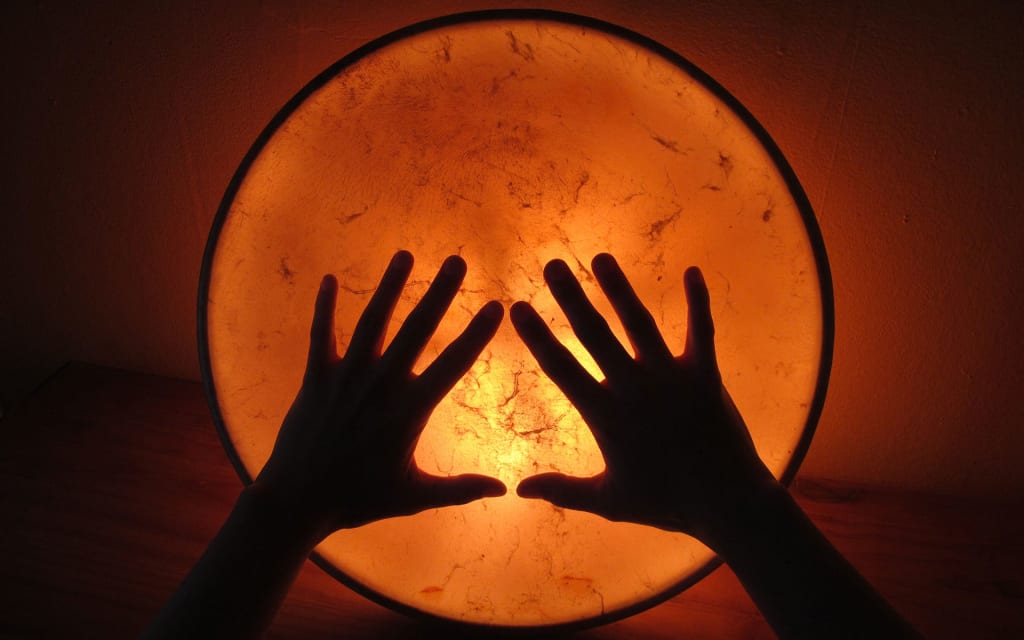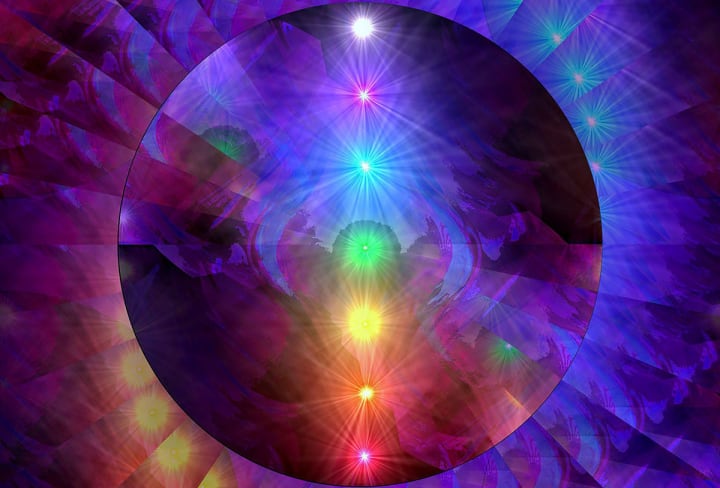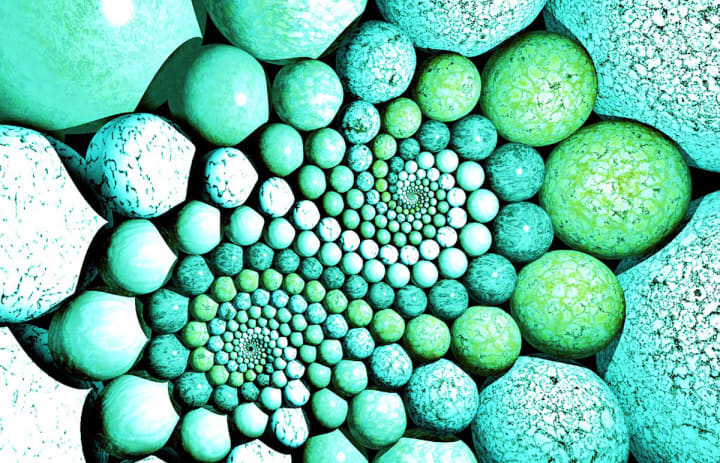What is Reiki Healing?
Reiki healing, or palm healing with energy, dates back thousands of years.

Energy medicine has been used to treat ailments in Eastern cultures for thousands of years. While there are many variations of energy healing, one specific one has been becoming more and more popular: Reiki. What is Reiki healing? The word Reiki is derived from two Japanese words: rei, meaning universal, and ki, meaning life energy. Current Reiki practice can be traced to the spiritual teachings in Japan during the early 20th century. These teachings included meditative techniques and healing practices. The healing practices were further developed, placing less emphasis on the meditative techniques. Reiki was introduced to Western cultures in the late 1930's.
Reiki's Flowing Energy

Image via Primal Painter
During a traditional Reiki healing session, the client lies down or sits fully clothed. The practitioner then lightly places his or her hands on or just above the client's body, palms down, using a series of 12-15 positions. Each position is held for about 4 minutes, or until the practitioner feels that the energy flow has slowed or stopped. It is said that the energy flow is experienced as sensations such as heat or tingling in the hands. Typically, the practitioner delivers at least four 30 to 90 minute sessions for each client. The techniques include centering, clearing, beaming, extracting harmful energies, infusing, smoothing and raking the aura, all of which are claimed to influence the energy that Reiki advocates postulate.
Supposedly, Reiki heals by flowing through the affected parts of the energy field and charging them with positive energy. It raises the vibratory level of the energy field in and around the physical body where the negative thoughts and feelings are attached. This causes the negative energy to break apart and fall away. In so doing, Reiki clears, straightens and heals the energy pathways, thus allowing the life force to flow in a healthy and natural way. During a session you can experience visions, thoughts, or memories, of past aspects of your life. Reiki then stores those memories on our human "iCloud," so that they no longer take up space in our conscious or subconscious anymore. The memories aren't erased, but rather, they are moved so that we can let go of old patterns and make room for positive encounters.
Is Reiki Safe?

Image via Healing Art Forms
In order for physicians and other healthcare practitioners to recommend a treatment or healing practice to patients, they need evidence that it is safe and effective. With respect to safety, there have been no reported negative effects from Reiki in any of the research studies. This is understandable given that no substance is ingested or applied to the skin, and Reiki touch is non-manipulative. Because the practitioner does not direct the healing and does not decide what to work on, or what to heal, the practitioner is not in danger of taking on the karma of the client. And because it is a channeled healing, the Reiki practitioner's energies are never depleted.
But is Reiki really effective? Or more precisely, what is Reiki effective for? Perhaps Reiki works simply as a placebo effect. If you believe you’re being treated, you feel better. But a true Reiki practitioner can be spot-on in his diagnosis of an area of yourself that you want to work on, and even give you practical advice for self-improvement. It can be pretty incredible how they know so much about you without being giving any prior details. Regarding a question about the effectiveness of Reiki, a Reiki practitioner might answer by saying, "Reiki is effective for restoring balance, which can show up in a number of ways, depending on the current need of the individual."
What About the Science Behind Reiki?

Image via Physically Speaking
Since the early 2010’s, due to biological test results, Reiki has been taken more seriously by health practitioners trained in both eastern and western modalities of medicine. That could be due to the science backing up the power of different variations of energy healing. A study conducted in 2013 found that 10 minutes of energy healing was as effective as physical therapy in improving the range of motion in people with mobility problems. UCLA even has en electromyography (EMG) lab that studies electrical activity in the body. To date, most of the studies in Reiki research have been conducted to measure pain, anxiety, and stress, including heart rate, blood pressure, salivary cortisol, as well as measures for job burnout and caring efficacy. More specific research has been conducted to evaluate the outcomes of using Reiki practices for stroke rehabilitation, depression, and other chronic health conditions.
Fortunately, it is not necessary for science to accept the existence of the positive effects of Reiki for us to reap the benefits of this non evasive practice. In fact, aspirin was used for 70 years before science understood how it worked. Like love and sadness, the impact of Reiki on the human system is not measured. Although some effects of Reiki are measurable, such as improved heart rate and blood pressure, many commonly reported benefits of repeated Reiki sessions, such as a sense of spiritual connection and enhanced self-esteem, may not be as easily measured. Patients who are more spiritually connected and who are simply more open to Reiki and other forms of energy healing may be the patients who are easier to treat and who are better equipped to follow treatment protocols.
Reiki has been shown to significantly, albeit indirectly, impact medical outcomes by supporting the ability of patients to access conventional medicine and gain a heightened awareness of their own needs. So until we can get some solid facts about the medical benefits of energy medicine, I’d say to consider Reiki as a complement, not as a substitution, for working with a doctor.
Reiki is an ancient and profoundly simple system of “laying on of hands” healing derived from Tibetan Buddhism. In the West, Reiki has been kept highly secret for many years. Essential Reiki by Diane Steinpresents full information on all three degrees of this healing system, most of it in print for the first time. Teaching from the perspective that Reiki healing belongs to all people, Diane Stein breaks new ground in her classic guide to this ancient practice.





Comments
There are no comments for this story
Be the first to respond and start the conversation.